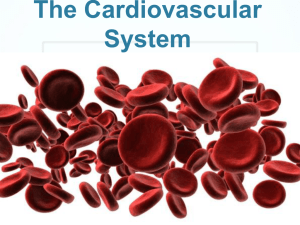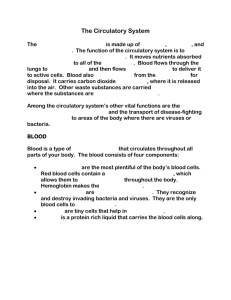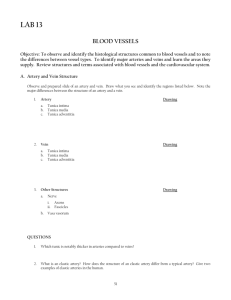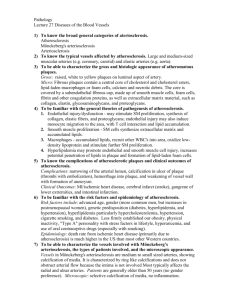1a Noncommunicable Diseases completed
advertisement
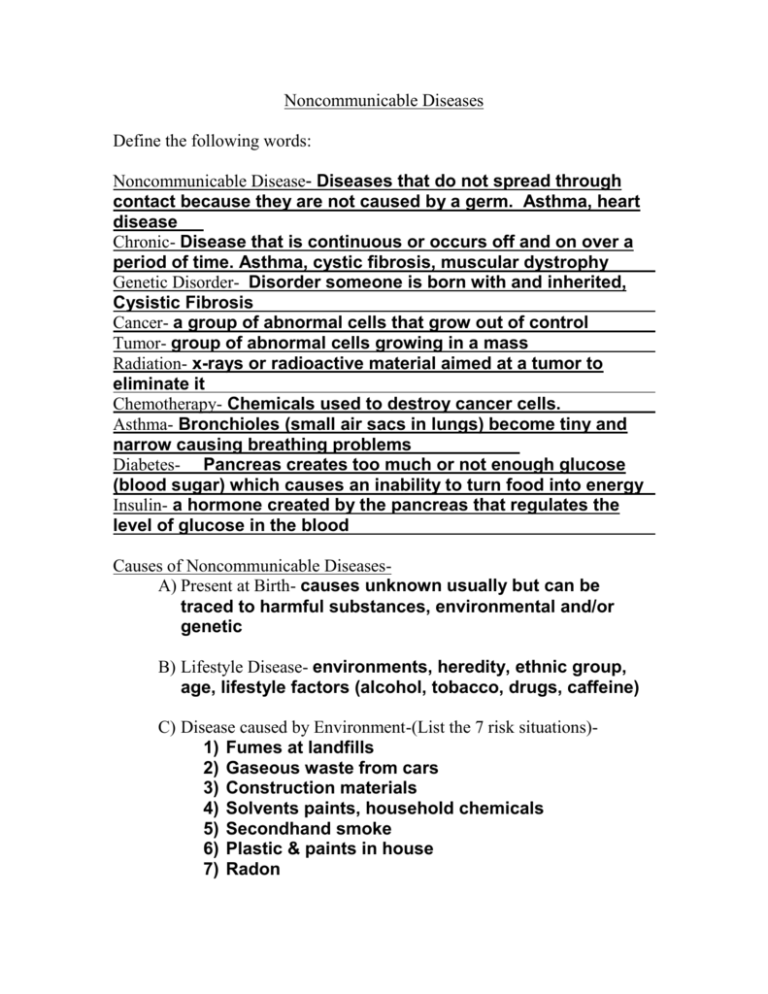
Noncommunicable Diseases Define the following words: Noncommunicable Disease- Diseases that do not spread through contact because they are not caused by a germ. Asthma, heart disease Chronic- Disease that is continuous or occurs off and on over a period of time. Asthma, cystic fibrosis, muscular dystrophy Genetic Disorder- Disorder someone is born with and inherited, Cysistic Fibrosis Cancer- a group of abnormal cells that grow out of control Tumor- group of abnormal cells growing in a mass Radiation- x-rays or radioactive material aimed at a tumor to eliminate it Chemotherapy- Chemicals used to destroy cancer cells. Asthma- Bronchioles (small air sacs in lungs) become tiny and narrow causing breathing problems Diabetes- Pancreas creates too much or not enough glucose (blood sugar) which causes an inability to turn food into energy Insulin- a hormone created by the pancreas that regulates the level of glucose in the blood Causes of Noncommunicable DiseasesA) Present at Birth- causes unknown usually but can be traced to harmful substances, environmental and/or genetic B) Lifestyle Disease- environments, heredity, ethnic group, age, lifestyle factors (alcohol, tobacco, drugs, caffeine) C) Disease caused by Environment-(List the 7 risk situations)1) Fumes at landfills 2) Gaseous waste from cars 3) Construction materials 4) Solvents paints, household chemicals 5) Secondhand smoke 6) Plastic & paints in house 7) Radon Heart Disease Heart Disease, also know as cardiovascular disease, includes any condition that lessens the strenth or function of the heart and/or blood flow or blood vessels. Cholesterol- Waxy, fatty substance found in cells of animals Arteriosclerosis – fatty substances in blood deposits on the walls of arteries causing the hardening of artery walls Arteriosclerosis is the major cause of high blood pressure (force of blood on the walls of arteries—normal is 120/80) . Describe what actually happens in arteriosclerosis: Slows flow of blood through arteries. Which blood flow is reduced, blood clots form causing a block in blood flow and can result in a heart attack, embolism (major blood vessels breaks) or stroke. Blood Pressure- The force of blood on the walls of arteries Typical or average blood pressure is 120/80______. The top number represents pressure when the heart is contracting (systolic) The bottom number represents pressure when heart is relaxed (diastolic) When is the most likely time your blood pressure is going to be higher? Feeling stress or exercising Explain: heart rate is increased causing more blood flow and pressure on vessels. Define Heart Attack- Heart tissue (muscle) dies from lack of oxygen and nutrients because of the reduced or stopped blood flow. Define Stroke- Caused by an artery in the brain that breaks (hemorrhage). Can lead to loss of movements or death. Describe the two ways surgeons treat heart disease 1) Go around blockage (bypass) by removing a vein from leg and attaching it above and below blocked artery 2) Dissolving the clot by using medication 3) Angioplasty – insert a “balloon” where the artery is blocked, inflating the balloon crushes the fatty deposit blocking the flow. When the balloon is deflated, blood flow can begin again. How do you treat high blood pressure? Medication, change in lifestyle behaviors (balanced diet, exercise) managing stress effectively and maintain a healthy weight. In order to control you risk of heart disease, what 5 risk factors can you control? Explain. Maintain a healthy and constant weight Exercising regularly to strengthen you heart Eating a diet that is high in fiber, low in salt and is balanced Limit your stress and deal with stress in positive and healthy ways Not smoking or using any tobacco products




